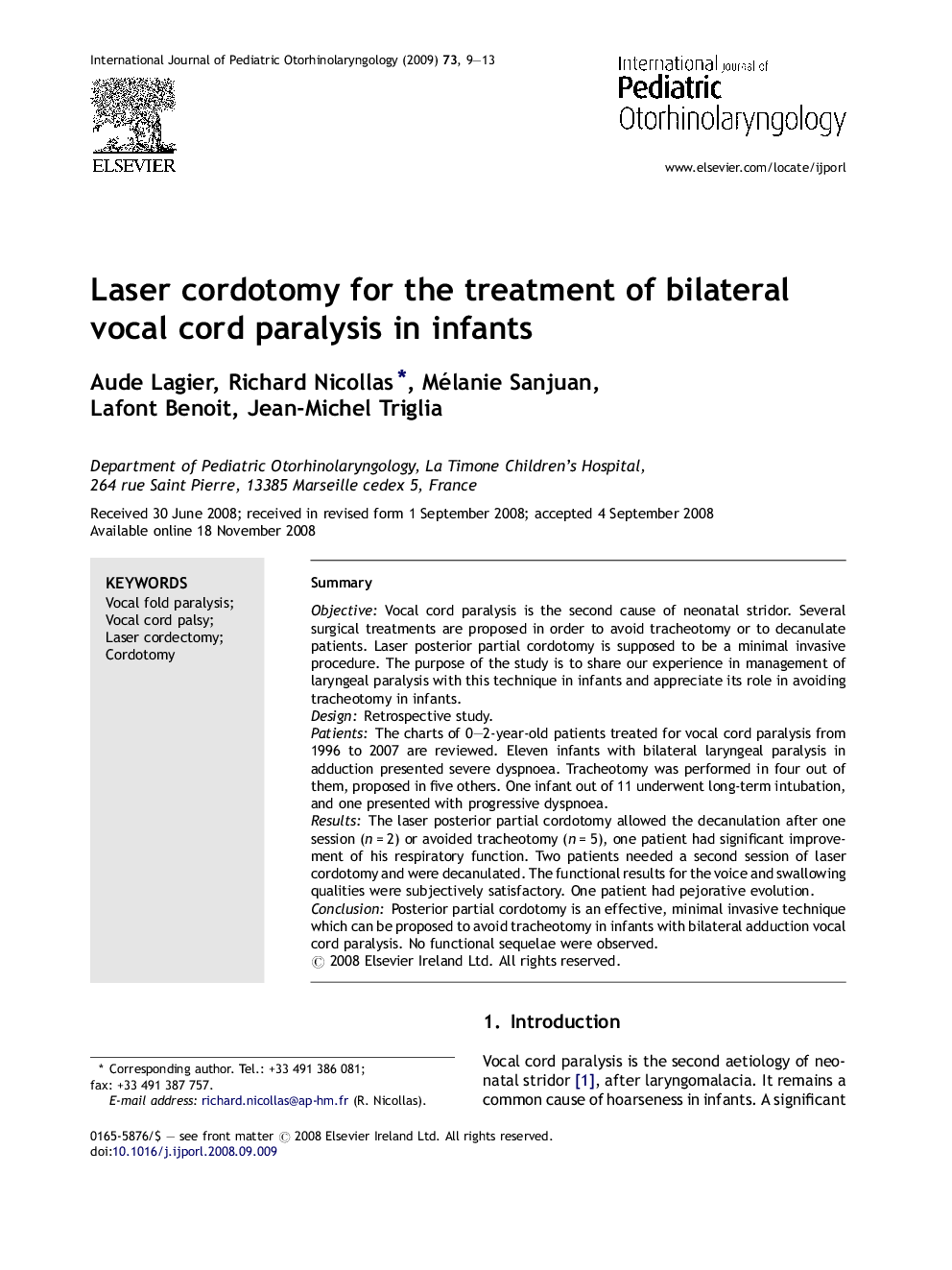| Article ID | Journal | Published Year | Pages | File Type |
|---|---|---|---|---|
| 4115384 | International Journal of Pediatric Otorhinolaryngology | 2009 | 5 Pages |
SummaryObjectiveVocal cord paralysis is the second cause of neonatal stridor. Several surgical treatments are proposed in order to avoid tracheotomy or to decanulate patients. Laser posterior partial cordotomy is supposed to be a minimal invasive procedure. The purpose of the study is to share our experience in management of laryngeal paralysis with this technique in infants and appreciate its role in avoiding tracheotomy in infants.DesignRetrospective study.PatientsThe charts of 0–2-year-old patients treated for vocal cord paralysis from 1996 to 2007 are reviewed. Eleven infants with bilateral laryngeal paralysis in adduction presented severe dyspnoea. Tracheotomy was performed in four out of them, proposed in five others. One infant out of 11 underwent long-term intubation, and one presented with progressive dyspnoea.ResultsThe laser posterior partial cordotomy allowed the decanulation after one session (n = 2) or avoided tracheotomy (n = 5), one patient had significant improvement of his respiratory function. Two patients needed a second session of laser cordotomy and were decanulated. The functional results for the voice and swallowing qualities were subjectively satisfactory. One patient had pejorative evolution.ConclusionPosterior partial cordotomy is an effective, minimal invasive technique which can be proposed to avoid tracheotomy in infants with bilateral adduction vocal cord paralysis. No functional sequelae were observed.
